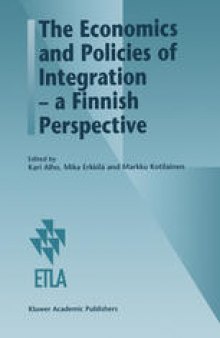 جزییات کتاب
جزییات کتاب
European integration has come a long way since the fIrst steps in the aftermath of the Second World War. At that time, the neutral European countries chose to stay outside the European Economic Community. Those countries that wanted less ambitious cooperation formed the European Free Trade Association. Increasing trade dependence between the two groupings was institutionalised when they signed free-trade agreements with each other, creating thus a wider European free-trade area in manufactures. The strong push towards deepening integration among EC countries, manifested in the Single European Act in 1985, and the dismantling of non-tariff barriers to trade and factor flows in the EC by 1993, made it necessary for EFTA countries to secure access on equal conditions to their most important export market and thus prevent trade diversion. The ensuing agreement on the European Economic Area responded to these demands, but did not resolve the apparent asymmetry in EEA decision-making. This emanated from the supremacy ofEC legislation over EEA rules, thus making EFTA countries passively adjust to EC norms. Consequently, Finland applied for membership in the EC in March 1992, with effect from 1995. The latest phase in the integration process, the Treaty on European Union, has an aim to further deepening, e. g. the formation of the economic and monetary union by 1999.
 درباره نویسنده
درباره نویسنده

کری آلویک گریمسو (انگلیسی: Kari Aalvik Grimsbø؛ زادهٔ ۴ ژانویهٔ ۱۹۸۵(1985-01-04)) یک بازیکن هندبال اهل نروژ است.
 دانلود کتاب
دانلود کتاب
 جزییات کتاب
جزییات کتاب
 درباره نویسنده
درباره نویسنده
 کری آلویک گریمسو (انگلیسی: Kari Aalvik Grimsbø؛ زادهٔ ۴ ژانویهٔ ۱۹۸۵(1985-01-04)) یک بازیکن هندبال اهل نروژ است.
کری آلویک گریمسو (انگلیسی: Kari Aalvik Grimsbø؛ زادهٔ ۴ ژانویهٔ ۱۹۸۵(1985-01-04)) یک بازیکن هندبال اهل نروژ است. 








 این کتاب رو مطالعه کردید؟ نظر شما چیست؟
این کتاب رو مطالعه کردید؟ نظر شما چیست؟
